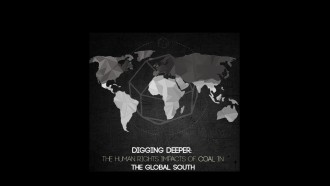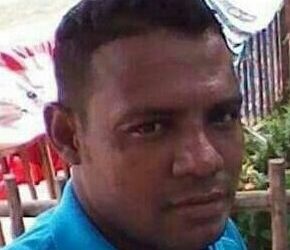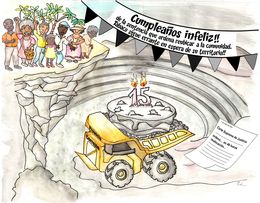El Chocó, Colombia: Rainforest cultures confront mechanized mining / Culturas de la selva húmeda enfrentan la minería mecanizada—by/por Mary Kelsey & Steve Cagan
The Project:
In rivers and streams of Colombia’s El Chocó region, traditional artisanal panning for gold is being replaced by mechanized mining. This new practice represents a threat to traditional economic and social structures, as well as to Chocó’s rich rain forest environment. And there looms the even greater threat of large-scale mining by transnational corporations.The El Chocó Mining project documents the work and lives of grassroots miners through photography and drawing.
Our goal is to help the communities affected by these changes, and to publicizethe threats and dangers they confront. This is a solidarity project carried out through an active collaboration with the affected communities.
A multimedia project:
For this work we are combining photography, line drawings and texts. One quality of photography is that it stops action, invites us to look more carefully and deliberately, and constructs meaning from details in a still image. Drawing, on the pother hand, makes meaning using line and shape. Our intent in combining the two media is to promote understanding in a way that requires more contemplation, and to encourage deeper engagement and thoughtfulness about the issues that touch our subjects, their lives, and their humanity. We hope this may help form the basis of a more profoundly experienced solidarity between viewers and subjects.
The Vision:
Large-scale extraction of petroleum, gold, coal, precious industrial metals and other raw materials increasingly threatens habitats throughout the world. Some areas recently in public scrutiny include Central America, Central and West Africa, Brazil, Chile, Ecuador, Canada, the United States and Colombia.
In Colombia a variety of habitats are under threat from actual or proposed mechanized mining. Our project focuses on the El Chocó region in the Pacific northwest of the country. It’s an area of tropical and sub-tropical rain forest, one of the wettest places on earth, with great diversity of flora and fauna.
Native communities thrived for thousands of years in this environment before the arrival
of the Spanish, who enslaved the locals and also imported African slaves to produce gold. Their Black descendants have been living on the generosity of the forest for hundreds of years, their cultures based on river and swamp habitat.
The subsistence economy of these cultures includes planting, hunting, fishing, and cutting lumber primarily for their own consumption. In addition, panning for gold provides cash for things not locally produced, such as tools, cloth, salt, or utensils. Traditionally, extracting and refining gold has been a part-time activity.
This activity, which still goes on in some villages in its traditional form, has barely any environmental impact. Relatively little earth is turned over from river and streambed. The few holes opened in the forest floor are small and shallow. Artisanal miners do not use mercury or cyanide to refine gold.
In recent years sky-high prices of gold have brought mechanized mining to this area. Scores, if not hundreds, of large backhoes have been brought in to open large pits in search of gold. They push aside and discard the thin forest topsoil to dig large pits. Tons of silt and rocks, oil and chemicals are dumped into the streams and rivers. Mercury is added to refine the metal, and the resulting amalgam is burned in open air, endangering the environment and the health of people in the communities.
After the machines finish with a section, or sometimes even while they are still working, local people come and set up artisanal panning operations. They work full time, which means they’ve abandoned their traditional subsistence economic activities, which have defined them culturally and supported their families.
This newer mechanized mining has provoked divisions within the Afro-Colombian and indigenous communities that make up most of El Chocó. Some individuals and communities see great economic opportunity, while others see a threat to their forest and their way of life, and question the economic benefits.
Colombia’s ongoing armed conflict also played a role. Both guerrilla and paramilitary groups, operating in the shadows, extorted money from miners. Some armed groups even began to invest in mining operations. The violence connected with this spilled over into village and city life, distorting social relations.
As serious as these problems are, a much greater threat looms just over the horizon. The Colombian government is promoting even larger-scale mining by trans-national corporations. In El Chocó the communities, even those favoring current mechanized practices, are nearly unanimous in opposition to this development.
read on: https://www.elchocomining.net/
You can buy the book „El Precio del oro“ in Colombia. Outside Colombia it is available as ebook. see: https://www.elchocomining.net/



